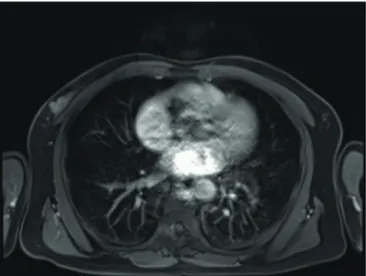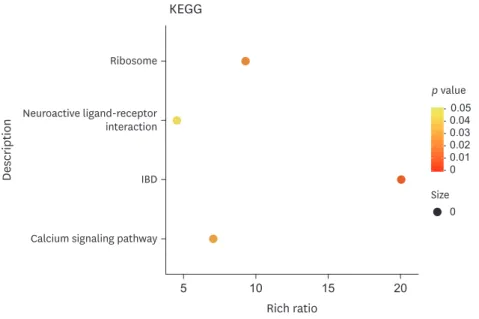ABSTRACT
Male breast cancer (MBC) is rare and accounts for approximately 1% of all breast cancer cases worldwide. Previous studies have suggested that several factors significantly increase the risk of MBC. Prolactinoma has the highest incidence rate among patients with functional pituitary tumors. However, whether prolactinoma is involved in the onset and progression of breast cancer remains unclear. To date, there are only five case reports globally on MBC with concurrent prolactinoma. We hereby describe the first case of MBC with prolactinoma in China. We also explored the patient's genetic profile using whole exome sequencing. Our findings may help advance our understanding of the molecular pathogenesis of MBC. Further molecular analyses of such cases are warranted to improve auxiliary molecular diagnostic methods and targeted therapy for MBC.
Keywords: Breast neoplasms, male; Prolactinoma; Whole exome sequencing;
Pituitary neoplasms
INTRODUCTION
Male breast cancer (MBC) is a rare form of breast cancer, accounting for approximately 1%
and 1.4% of all breast cancer cases in Europe and the Americas, and China, respectively. Its incidence varies by race and region [1]. Consistent with other types of cancer, the risk of MBC increases with age. In contrast to female breast cancers, the age of MBC onset is delayed and follows a unimodal distribution. To date, prospective studies on MBC are scarce, and clinical trials on breast cancer treatments have often excluded male participants. In the past decade, great efforts have been made to improve our understanding of the biological characteristics of MBC and develop effective treatments. Previous studies have suggested that certain factors significantly increase the risk of MBC.
It has been reported that approximately 15%–20% of patients with MBC have a family history of breast or ovarian cancer, and approximately 10% of the patients have a genetic predisposition toward this disease. Indeed, BRCA2 is the most common gene mutation associated with MBC, and carriers have a lifetime risk of 5%–10%; in comparison, carriers of the BRCA1 mutation have a lifetime risk of 1%–5% [2]. In addition, Klinefelter's syndrome, which is a relatively common disease characterized by primary hypogonadism and low
Case Report
Received: Mar 12, 2020 Accepted: Jul 29, 2020 Correspondence to Donglin Luo
Department of Breast, Thyroid Surgery, Daping Hospital, Army Medical University, Chongqing 40042, China.
E-mail: luodonglin1967@163.com
© 2020 Korean Breast Cancer Society This is an Open Access article distributed under the terms of the Creative Commons Attribution Non-Commercial License (https://
creativecommons.org/licenses/by-nc/4.0/) which permits unrestricted non-commercial use, distribution, and reproduction in any medium, provided the original work is properly cited.
ORCID iDs Shuai Hao
https://orcid.org/0000-0003-4942-2215 Miao Huang
https://orcid.org/0000-0001-6828-8678 Wuguo Tian
https://orcid.org/0000-0001-6414-6808 Yi Chen
https://orcid.org/0000-0002-6919-5446 Jianjie Zhao
https://orcid.org/0000-0003-0950-9623 Donglin Luo
https://orcid.org/0000-0001-9329-0147 Funding
This study was funded by the Chonqing Science and Technology Bureau (No.2019QNXM027).
Conflict of Interest
The authors declare that they have no competing interests.
Shuai Hao
1, Miao Huang
2, Wuguo Tian
1, Yi Chen
1, Jianjie Zhao
1, Donglin Luo
11
Department of Breast, Thyroid Surgery, Daping Hospital, Army Medical University, Chongqing, China
2


